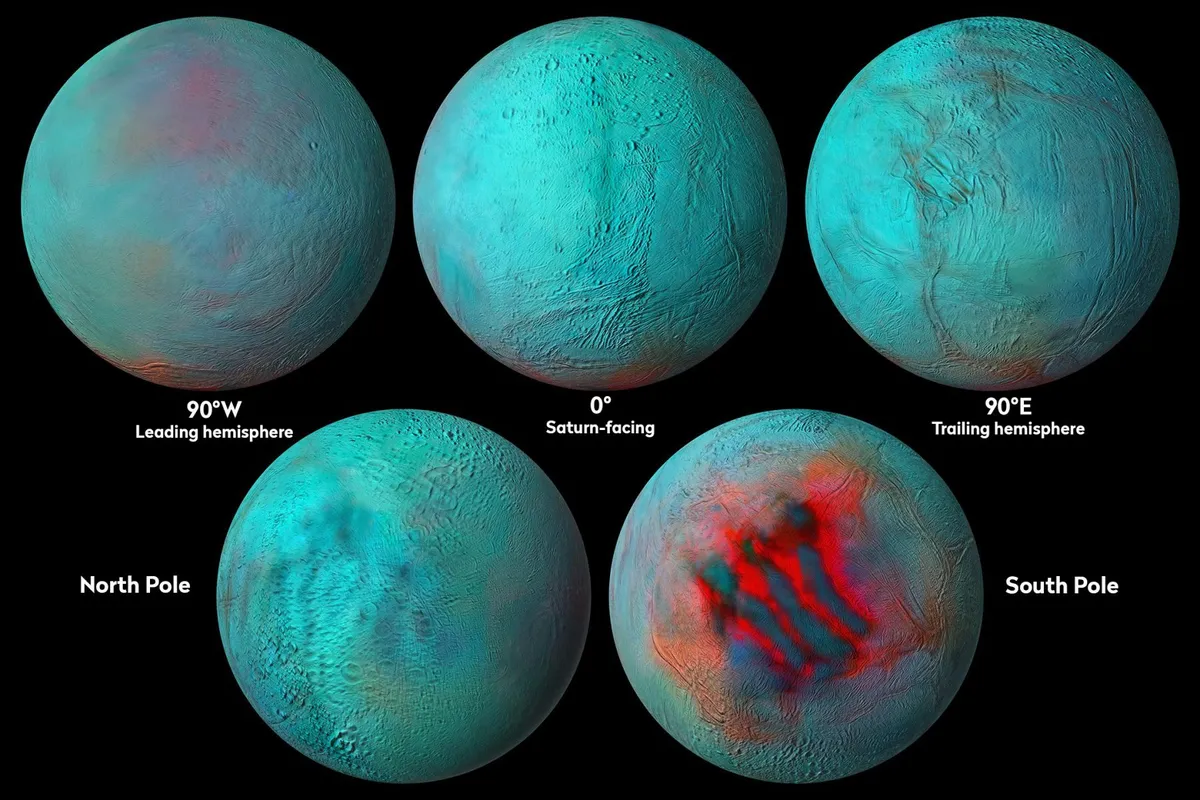
These incredible new images show global infrared views of Saturn's icy moon Enceladus, captured by the Cassini spacecraft and just released by NASA.
Enceladus is one of many frozen moons found around our neighbouring planets, but underneath its icy crust lies an ocean of liquid water, one of just a handful of known oceans of the Solar System.
One of the key objectives of the 13-year Cassini mission was to analyse this subsurface ocean, which the spacecraft did by diving through plumes of water vapour that erupt from below the frozen surface.
Planetary scientists are keen to study the subsurface oceans of icy moons - Jupiter's moon Europa being another prime example - because the presence of liquid water means conditions could be suitable to support life.
Read more:
- Cassini's top 10 images of Saturn and its moons
- Organic compounds found in Enceladus's plumes
- Cassini returns first ring dive images
Cassini studied Saturn and Enceladus from 2004 - 2017 and during that time its Visible and Infrared Mapping Spectrometer analysed visible and infrared light reflected off Saturn, its rings and its icy moons.
That data has been used to make this new global composite map of Enceladus, which shows how infrared signals correlate with geologic activity observed at the moon's South Pole.
Here, plumes of water and ice erupt from the subsurface ocean, ripe for analysis in the search for life-supporting conditions beyond Earth. Also visible are the famous 'tiger stripes', where the plumes originate.
Similar infrared features are seen in Enceladus's northern hemisphere, telling planetary scientists that geologic activity, resurfacing the landscape, occurs at both hemispheres.
What's clear is that Enceladus is a dynamic and fascinating body, and that analysis of Cassini data has more secrets yet to be revealed.
Image stats
- Observatory Cassini spacecraft
- Release date 18 September 2020
- Image creditNASA/JPL-Caltech/University of Arizona/LPG/CNRS/University of Nantes/Space Science Institute
